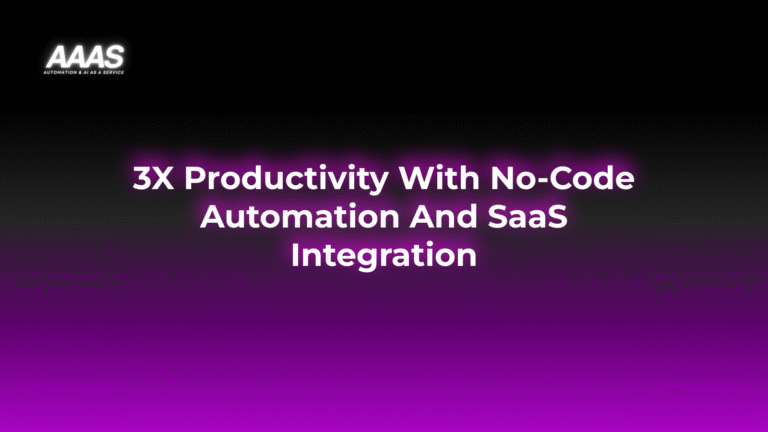ChatGPT Business Prompts for E-commerce & Sales Funnel Optimization: Step-by-Step Tutorial
Market Problem
Modern e-commerce stores grapple with high cart abandonment rates, inconsistent lead capture, and friction at multiple customer journey touchpoints. Manual funnel adjustments are slow, costly, and difficult to personalize at scale—ultimately leading to missed sales and lost revenue.

Solution & Benefits
Integrating ChatGPT business prompts with your e-commerce sales funnel automates customer interactions, personalizes recommendations, and dynamically optimizes conversion paths. Using AI-powered conversational agents, stores can:
- Proactively answer prospect questions in real-time
- Guide users through purchase decisions
- Upsell, cross-sell, and recover abandoned carts automatically
- Segment leads for tailored email/SMS sequences
- Boost conversion rates and customer lifetime value

Real Use Cases
- Personalized Onboarding: New visitors interact with a guided ChatGPT assistant that asks relevant questions and suggests products.
- Abandonment Recovery: When a cart is about to be abandoned, ChatGPT prompts the user with personalized offers or FAQs to address objections.
- Upsell Recommendations: Post-purchase, ChatGPT recommends complementary add-ons increasing average order value.
- Dynamic FAQ: Customers type product-specific queries and receive instant, detailed answers powered by AI.
Technical Details
Platform Integration
- Embed ChatGPT via API on Shopify, WooCommerce, or custom storefronts
- Sync with CRM and marketing automation tools (e.g., Klaviyo, HubSpot) for post-interaction workflows
- Utilize OpenAI’s GPT API with prompt templates optimized for e-commerce
Prompt Engineering
- Design prompt flows for each funnel stage: Awareness, Consideration, Purchase, After-Sale
- Leverage variables (product name, user behavior, cart value, etc.) for contextual replies
- Test prompts using split-testing for continuous optimization
Comparison with Alternatives
| Solution | Automation | Personalization | Setup Complexity | Scalability |
|---|---|---|---|---|
| ChatGPT Prompts | High | Dynamic, AI-driven | Medium | Very High |
| Manual Chat Support | Low | Agent-dependent | High | Low |
| Scripted Bots | Medium | Static, Rule-based | Medium | Medium |
| Email/SMS Only | Low–Medium | Segmented, Not Real-time | Low | High |
Pricing Table
| Plan | Features | Monthly Cost | Best For |
|---|---|---|---|
| Starter | 1 chatbot, basic prompts, 1,000 interactions | $29 | Small Stores |
| Growth | 3 chatbots, advanced prompts, analytics, 5,000 interactions | $89 | Scaling Operations |
| Enterprise | Unlimited bots, 24/7 support, API access, integrations | Custom | Large E-commerce Brands |
ROI-Focused Practical Examples
- Example 1: A fashion retailer enabled real-time AI chat for product questions and saw a 19% decrease in cart abandonment, netting an additional $5,600/month.
- Example 2: An electronics e-store used ChatGPT to recommend accessories at checkout, raising average order value by 12% in the first quarter.
- Example 3: After integrating AI-powered abandonment chat prompts, a midsized Shopify store increased monthly conversions from 2.3% to 3.3%.
Setup Steps
- Define Funnel Stages: Map your customer journey (Awareness, Interest, Decision, Action, Retention).
- Choose Chat Platform: Select where ChatGPT will be deployed—site widgets, email, SMS bots, or all.
- Integrate ChatGPT API:
- Craft Funnel Prompts: Write targeted prompts for each funnel stage (see InternalLink:chatgpt-funnel-prompts-guide|ChatGPT Funnel Prompts Guide).
- Test & Optimize: Monitor metrics (CTR, conversion rate, AOV) and continuously refine prompt logic.
- Sync with CRM & Marketing: Export leads and trigger workflows for email/SMS nurturing.
- Monitor Compliance & Data Privacy: Ensure all AI interactions comply with GDPR/CCPA.
Pros & Cons
| Pros | Cons |
|---|---|
|
|
Expert Tips
- Start with a single funnel stage to minimize overwhelm and iterate based on results
- Leverage customer feedback to refine prompt outcomes
- Segment users (by cart value, product interest) for hyper-personalized interactions
- Combine AI chat with human handoff for high-ticket sales
- Regularly audit AI chats for on-brand messaging and compliance
- Explore multilingual prompt variations to reach wider audiences
FAQ
- Can I use ChatGPT with any e-commerce platform?
- Yes, OpenAI’s API-based approach works with major platforms including Shopify, WooCommerce, Magento, and custom sites with developer support.
- Is my customer data secure?
- Data transmitted via API should use encryption and comply with privacy laws (see OpenAI’s security documentation).
- How do I prevent off-brand or erroneous AI replies?
- Careful prompt engineering, conversation logging, and regular review help maintain consistent, brand-aligned messaging.
- What ROI can I expect?
- Depending on funnel stage and current metrics, stores often see 10–20% improvements in conversion-related KPIs within months of deployment.
- Do I need coding skills?
- While API integration may require development resources, many SaaS tools offer no-code/low-code implementation for faster setup.
References & Citations
- OpenAI: GPT API Documentation
- Shopify: Conversion Rate Optimization Guide
- Baymard Institute: Cart Abandonment Statistics
- HubSpot: AI for E-commerce
Last updated:







